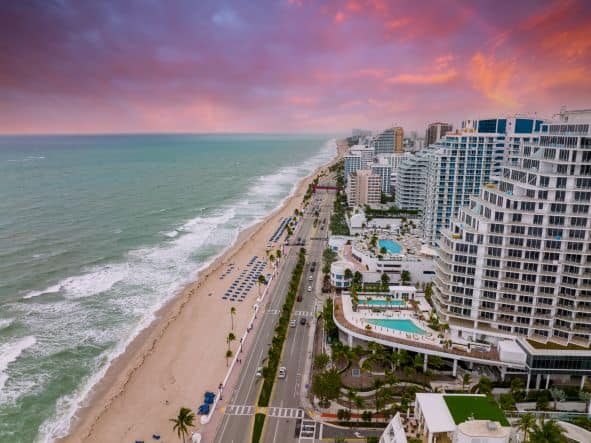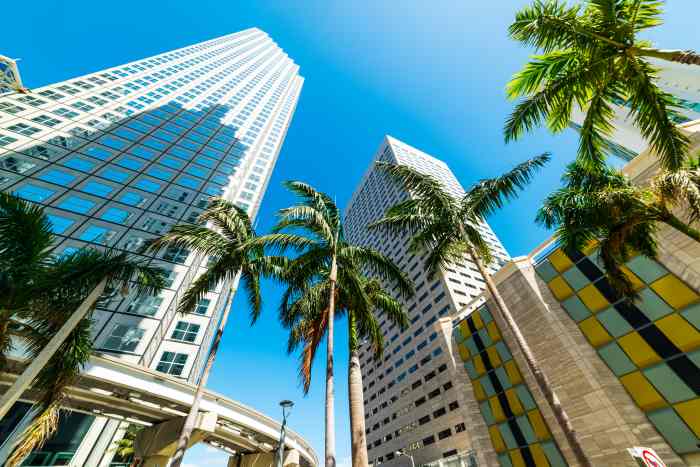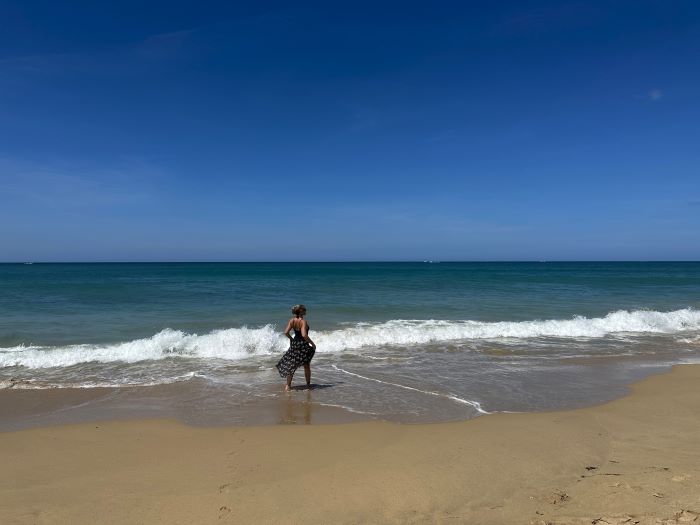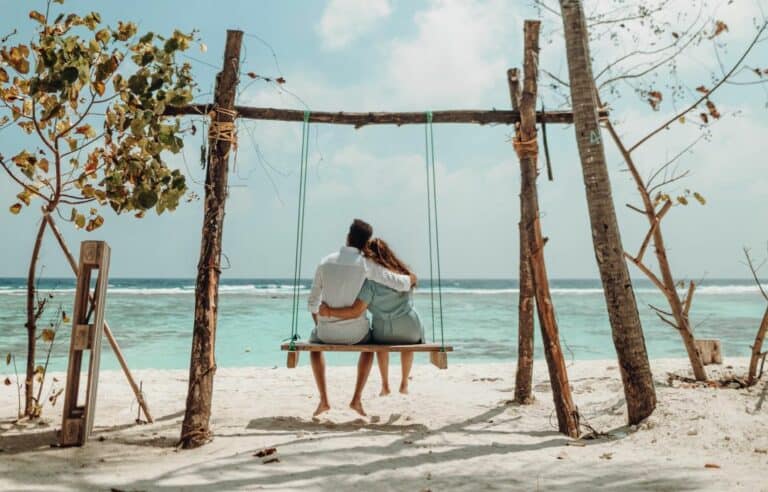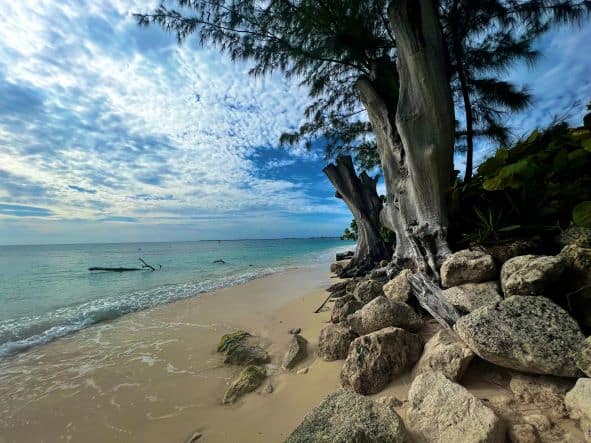Santiago de Cuba is the second-largest city in Cuba, the capital of Santiago de Cuba Province, and the Cuban capital of the annual carnival.
Located on the island’s eastern side, Santiago is about 870 kilometers (or 540 miles) from Havana. It is an amazing destination if you are able to fit it into your itinerary.
I traveled here by bus from Havana, which takes just under 20 hours. I have to say it went surprisingly well, with lots of breaks along the way, and I found Santiago to be a super interesting destination!
Santiago was the Capital of Cuba centuries ago, but only for a few short decades. The city, called the “birthplace of the Cuban revolution,” is still full of interesting history.
It is also a short few hours’ drive from Fidel Castro’s secret base in the Sierra Maestra mountains, where he hid and ran the resistance campaign in the 1950s.

Santiago De Cuba Map
Interesting Things To Do In Santiago de Cuba

If you are a fan of just showing up or even being picked up at home for your holiday adventures, an organized tour is probably perfect for you.
Here are six different organized tours you might enjoy and 25 sights and interesting places to explore on your own when you are visiting Santiago de Cuba.
6 Amazing Santiago De Cuba Tours!
Below are listed six top-rated tours in Santiago, with someone else taking care of all the planning (who knows the great things about Santiago you don’t want to miss)!
1. La Gran Piedra Excursion Hike!

This organized hike up to La Gran Piedra, or the large rock, is quite new, and if you love hiking and views, you are probably going to love this airy hike.
La Gran Piedra is a massive volcanic rock, 51 meters (167 feet) long and 30 meters (98 feet) wide, with a weight of over 60,000 tons, situated at a high point in the Sierra Maestra.
This excursion starts around 9 a.m.; you will be picked up at your casa and head for the vast Sierra Maestra Mountains.
You’ll ascend the 452 steps (!) all the way to its peak at 1,225 meters (over 4,000 feet), where you can breathe in the magnificent views over the vast mountains.
After descending again, you will visit the coffee plantation of La Isabelica and tour the hacienda and museum, which has been declared a World Heritage Site.
2. Cuba Revolution Tour (10/10!)

The Santiago de Cuba revolution tour is rated 10 out of 10 by former travelers and will start at Casa Granda Hotel in Céspedes Park in the center of Santiago.
You will visit the Cathedral of Santiago de Cuba before boarding a classic vintage car heading for the Palace of the Provincial Government and the Emilio Bacardi Museum.
You will also visit the Moncada Barracks, which Fidel Castro unsuccessfully attacked in 1953, which started the 26th of July Movement, and the connected museum.
Afterward, you will take a horse-drawn carriage to the Santa Ifigenia cemetery to see the tomb of Fidel Castro, among other famous people.
Make sure you stay to watch the impressive guard-changing ceremony every 30 minutes every day.
3. Almirante Oquendo Shipwreck Diving Or Snorkeling

If you are already a certified scuba diver, or even if you are just curious, you can participate in this shipwreck scuba diving tour outside Santiago de Cuba.
I have not done this dive myself, unfortunately (I have dived several other locations in Cuba), but reviews say it is an iconic dive. Around 100 meters from the shore, there is a tower on the surface that hides the wreck of Almirante Oquendo, which sank due to the American cannons.
The battleship is visible at the surface down to around 13 meters depth, which is why you can also do this tour as a snorkeling adventure. Admire the impressive ecosystem that has been created around the ship.
You can investigate every corner of the battleship that is now a colorful reef of algae, corals, and schools of fish!
4. Morro Castle Classic Car Day Trip

Morro Castle is a stunning 17th-century Spanish structure built to withstand pirate attacks and declared a World Heritage Site by UNESCO!
You’ll be picked up by a classic car for the Morro Castle private day tour, and when you arrive at the fortress, you’ll explore the castle’s perfectly preserved moats, cannons, and military structure.
The guide will tell you about the history of the majestic structures while you enjoy the breathtaking views of the city and the sea.
5. Private Tour Of Santiago De Cuba
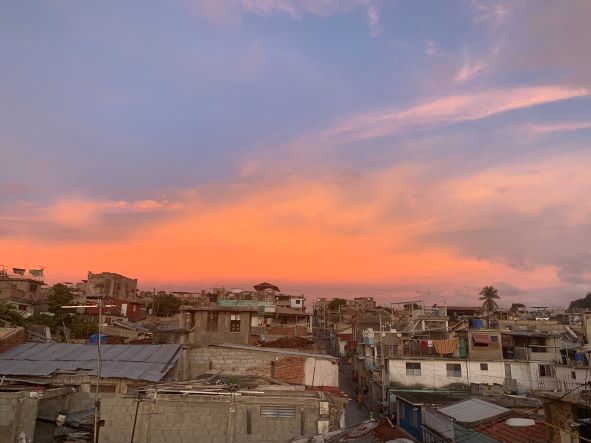
For your private tour of Santiago de Cuba, you can choose between a walking tour and a bus tour, both lasting for around 3 hours.
If you choose the bus, you will also visit Santa Ifigenia cemetery, the one where Fidel Castro and many other famous people are buried under impressive white marble pieces of art.
With this tour, you also get to witness the changing of the guard ceremony, which is quite solemn!
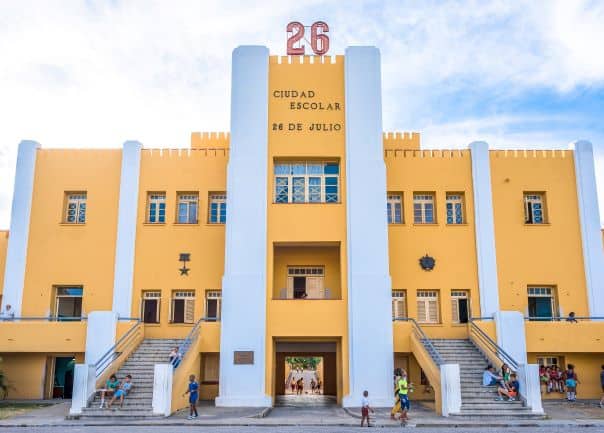
Then, you head over to the Moncada Barracks, where you will have the option to visit the Barracks on your own.
You can also walk around outside while the guide tells you all about why this place was so important for the Cuban Revolution.
The walking tour will also include Moncada Barracks, Plaza de Marte, the Bacardi Museum, Cespedes Park, the Cathedral of Santiago, and more!
6. Cimarron Monument & El Cobre Sanctuary
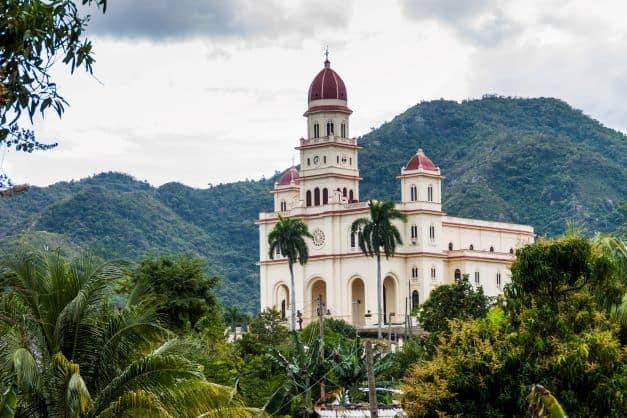
El Cobre is an idyllic small town, a picturesque fishing village east of Santiago de Cuba that is part of UNESCO World Heritage Sites.
This small mountain village is home to the Sanctuary of Nuestra Senora de la Caridad del Cobre, a Roman Catholic Basilica that’s been visited by pilgrims since 1612.
The village is also home to the Museum of the Revolution and El Campo Santo Cemetery. Take a hike around El Cobre, Cuba, and you’ll be rewarded with incredible views, a peaceful atmosphere, and some great photo opportunities.
Also read: Sensational 7 Days In Cuba Itinerary 2023!
25 Santiago De Cuba Attractions

When you visit Santiago de Cuba, your problem will not be finding something to do – rather prioritizing!
Well, if you plan your time well, you might fit in most, if not all, of the amazing sights in Santiago. Buckle up; here we go!
1. Castillo De San Pedro De La Roca El Morro
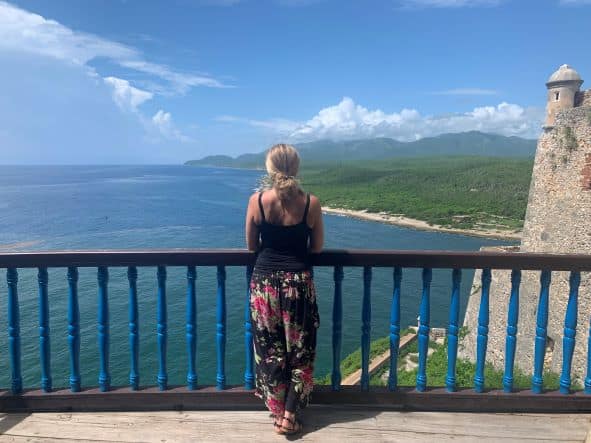
One of the most popular attractions in Santiago de Cuba is the El Morro castle. If you don’t want to come on an organized tour, you can take a taxi and drive out on your own terms.
This 16th-century fortress is located perfectly at the narrow entrance of Santiago de Cuba Bay, high above the blue water!
The castle grounds are beautiful, the fortress structure impressive, and the history of its construction and life fascinating.
From the Queen’s Balcony on the fortress’s outer wall, in particular, you have an airy, dreamy view over the hazy coastline and the Caribbean!
Also read: 19 Best Beaches In Cuba By A Cuba Expert
2. Plaza De La Revolucion Santiago

While visiting the country, which is still feeding off its revolution, one must-see destination is Plaza de la Revolución Santiago de Cuba. This plaza has a unique history as it was founded in 1801, shortly after the Spanish-American War.
The plaza features a majestic monument dedicated to Jose Marti, a hero of Cuba’s Revolution who died fighting for Cuban independence.
Marti was a leader of the Cuban independence movement from Spain as well as a renowned poet and writer.
The plaza also features other statues and monuments, and two large fountains that are lit up at night. It is also surrounded by a variety of shops, restaurants, and cafes, making it a great place for an outing!
3. Siboney Beach
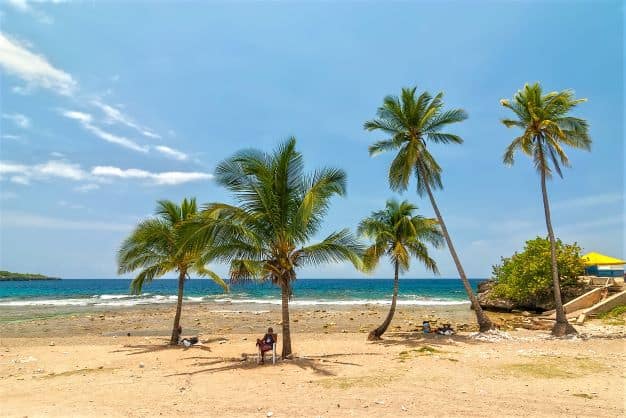
About half an hour outside Santiago de Cuba lies this stunning crescent of sand and crystal-clear water that draws sun seekers from near and far.
While Siboney is not one of Cuba’s crisp white beaches, it has a broad, golden, pebbly beach lined with palm trees and inviting waters. With activities like jet skiing or snorkeling, there’s something to grab your attention.
There are restaurants around where you can go for lunch and a cold drink on the shore or take in the beautiful views from a boat tour.
Time it to the sunset, and watch as the sky turns brilliant shades of reds, oranges, and purples.
Also read: 11 Amazing Day Trips From Havana Cuba From A Local
4. Santa Ifigenia Cemetary

Santa Ifigenia Cemetery is the burial site of Cuban national heroes José Martí, Fidel Castro, and some of the most iconic figures in Cuban history.
The cemetery was built in 1868 and is a white-marbled tranquil place with an incredible number of monuments, statues, and sculptures.
Some visitors even say coming here can be an emotional experience in learning about Cuban culture and history!

The guard-changing ceremony in front of Jose Marti’s mausoleum is certainly a powerful display; it happens every 30 minutes throughout the day.
There is also a museum that houses some of Martí’s personal items, such as his typewriter and his books, and a gift shop selling souvenirs and memorabilia related to Martí.
5. Parque Cespedes

Parque Cespedes in Santiago de Cuba has become an iconic symbol of this Cuban city. This bustling plaza is a great place to relax, enjoy some coffee, and people-watch.
The area also has some popular historical attractions, such as the Museo de Ambiente Histórico, where you can learn about the history of Santiago de Cuba.
The nearby Casa Diego Velazquez is another great spot to visit and explore, with its stunning architecture and beautiful gardens.
Lastly, the area around here has a lively nightlife scene, with plenty of bars and clubs to choose from.
Also read: 43 Legendary Things To Do In Havana By A Local
6. Casa Diego Velazquez
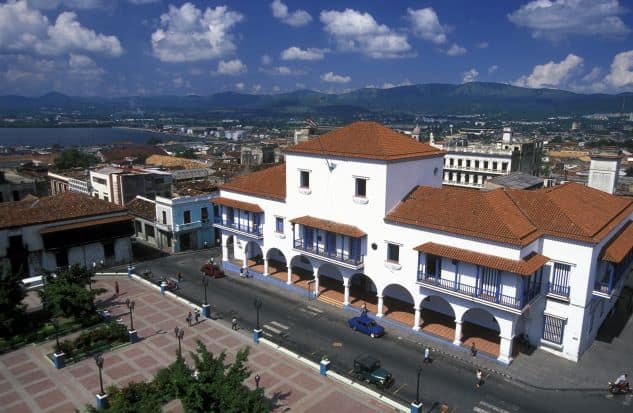
One of the most popular places to visit is Casa Diego Velasquez, one of the oldest buildings located in Santiago de Cuba.
The port of Santiago was established by Spanish conquistador Diego Velázquez de Cuéllar in 1515 as one of the original seven villas, cities, founded in Cuba.
Shortly after finding this perfect natural port near sources of gold (which quickly ran out), he named it Santiago, or St James, after the patron saint of Spain. Shortly after establishing the central trading house, the villa of St. James became Cuba’s capital.
Casa Diego Velazgues was built in 1522 as Velasquez’s home and eventually converted into a museum featuring a variety of colonial-era artifacts.
7. Catedral De Nuestra Señora De La Asuncion
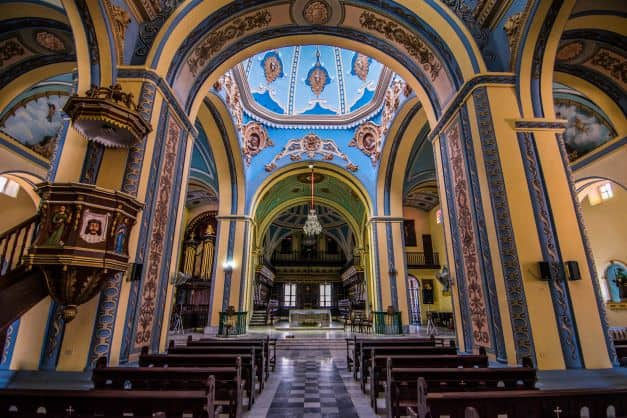
On one side of Parque Cespedes is a must-see attraction in Santiago de Cuba. The venerable Catedral de Nuestra Señora de la Asuncion, otherwise known as Catedral Mayor, the main cathedral.
Catedral Mayor was founded in 1518 by Diego Velásquez and is one of the oldest cathedrals in Cuba. It has a beautiful architectural style with gothic features, and the interior is equally impressive as the exterior!
It’s definitely worth taking some time to explore Catedral Mayor and experience the unique atmosphere it has to offer.
For those interested in Cuban history, Catedral Mayor also houses plenty of important artifacts from Cuba’s history.
Not least, it is a great place to go for some peaceful reflection and introspection in the middle of your holiday!
Also read: Where To Stay In Havana | Best Hotels, Neighborhoods and Areas!
8. Ayuntamiento Building
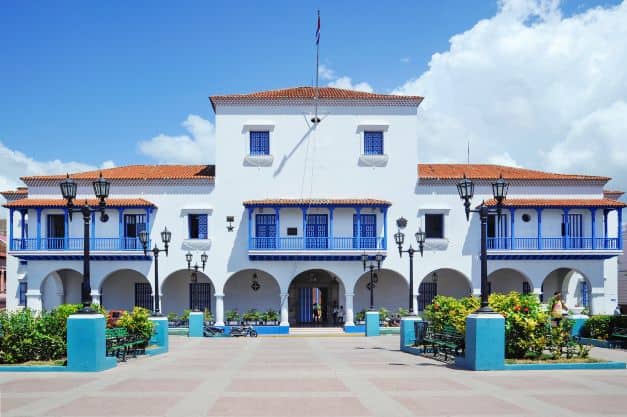
Santiago de Cuba is home to the Ayuntamiento building, a stunning white and blue historical building that has been standing since the 19th century.
Ayuntamiento was once the administrative center of Santiago de Cuba, and today, it is a popular tourist attraction with beautiful architecture and intricate designs.
Ayuntamiento is also home to several other attractions, such as the local museum and theater. Here, you can explore the City’s history and admire its many architectural details.
9. José A Saco Street

José A Saco Street is named after José Antonio Saco (one of the independence leaders in Cuban history), a pedestrian-only street with lots of shops and restaurants.
Jose A Saco Street runs through the center of the city and is home to various attractions.
Like the San Juan Hill Monument (commemorating the Battle of Santiago that took place during Cuba’s War of Independence), you will find lots of local restaurants offering traditional Cuban cuisine, art galleries, and music events.
José A Saco Street also has lots of souvenir shops selling handmade Cuban art, traditional musical instruments, and more.
10. Santiago De Cuba Harbor Boat Tour
Enjoy a tour along the bay of Santiago de Cuba, bordering Cayo Granma (the little island) from where the majestic Morro Castle can be seen from the sea.
A boat tour of the bay of Santiago allows you to see the charms of Santiago from a different perspective, as well as learn about the history from the guides.
11. La Gran Piedra
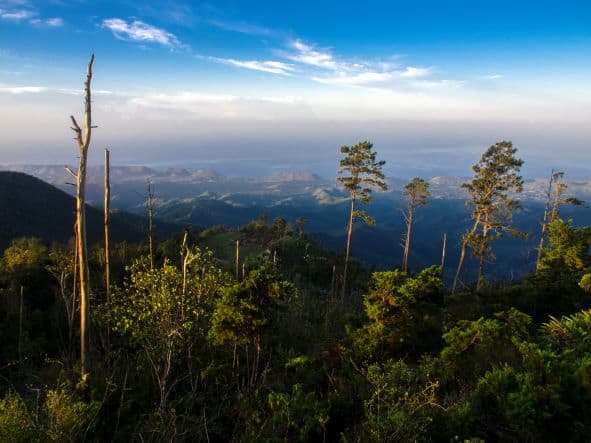
One of Santiago’s most iconic attractions is La Gran Piedra, an enormous rock formation located on San Pedro Mountain just outside Santiago de Cuba.
The site is said to have spiritual significance for the local indigenous population, and therefore, La Gran Piedra is a popular spot for locals as well as tourists.
Take in the breathtaking views towards Santiago and the sea from the top of La Gran Piedra, which stands at around 600 meters above sea level.
La Gran Piedra is also home to several species of rare and endangered birds, making it a great spot for bird-watching if you are into that.
Also read: What Is Cuba Known For? 22+ Enticing Things You Want To Know!
12. Moncada Barracks
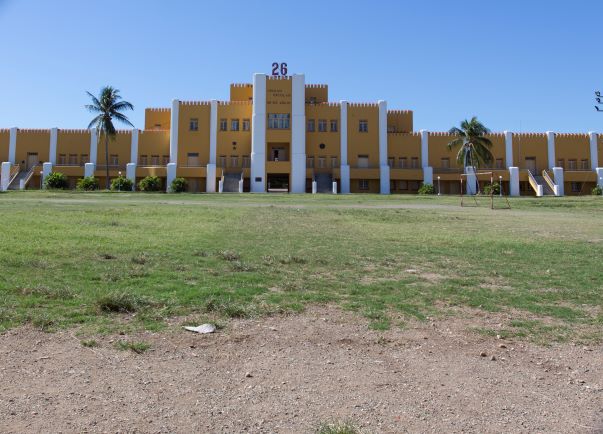
The Moncada Barracks was built in 1868, and 85 years later, it became an important point in the fight for the Cuban revolution!
On the 26 of July 1953, the Moncada barracks were the target of an armed attack by a small group of revolutionaries led by Fidel Castro. The attack failed, and the surviving revolutionaries were sent to jail, including Castro.
This attack is widely recognized as the beginning of the Cuban revolution and the inspiration for the name of Castro’s resistance movement, the 26th of July group.
Today, it is a museum where you can learn about Cuban history and the events that took place there. It’s also home to the Museum of the Revolution, including exhibits from different moments in Cuba’s revolutionary history.
13. Parque De Bonocao
Parque de Bonocao is home to a variety of trees and plants and has several historic points and monuments.
Such as the Parque’s main plaza with its towering statue of Antonio Maceo and a monument honoring José Martí.
Additionally, Parque de Bonocao is home to several cultural sites, including both an art museum and a history museum that offer interesting insight into Cuba’s past.
14. Sierra Maestra & Commandancia De La Plata

For those looking for outdoor adventure in general, the Sierra Maestra mountain range has plenty of terrains to explore.
But one thing you don’t want to miss is the secret headquarters of Fidel Castro and his revolutionary comrades hidden in the Sierra Maestra!
Note that you need to be in ok physical form to get yourself here on the bumpy and muddy paths that lead the way. But once you get here, you will be rewarded with not only amazing views!

You can also visit Fidel Castro’s clandestine bedroom, kitchen, and even toilet!
Visit the museum and imagine what it was like for yourself. See for yourself how the revolutionaries fighting Batista organized themselves here, hidden under the canopies.
15. Emilio Bacardi Moreau Museum
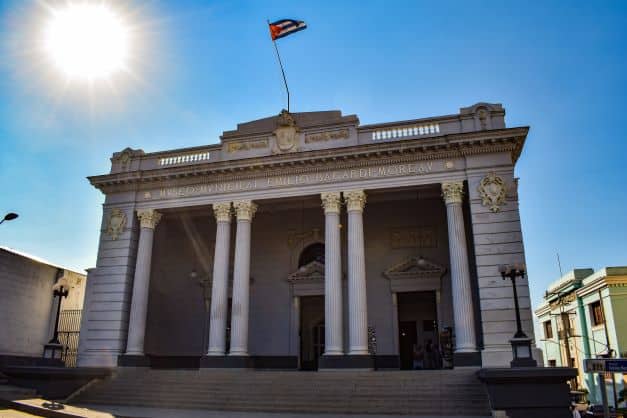
Santiago de Cuba used to be the home of the Bacardi family, which most people across the world have heard of at least once during a late-night party.
Today, the city is home to the Emilio Bacardi Moreau Museum.
This museum preserves the memory of Emilio Bacardi Moreau, who was an important leader in the struggle for Cuban independence towards the end of the 20th Century and a member of the renowned Bacardi family.
The museum is housed in his former residence and contains a variety of artifacts that tell Emilio’s story. The museum also has a library with rare books and documents related to Emilio and Cuban heritage.
Its impressive art gallery features works by Emilio Bacardi Moreau himself and other renowned Cuban artists.
16. Granma Island

Granma Island, located in the middle of Santiago de Cuba Bay, is one of the most popular attractions in Santiago de Cuba.
Granma Island is home to the Granma Yacht Museum, which houses an extensive collection of historical artifacts related to Cuban sailing vessels.
Granma Island offers visitors a unique blend of nature, history, and culture.
You can explore Granma National Park and Granma Memorial, as well as Granma Beach, a popular spot for fishing and swimming.
17. San Juan Hill
San Juan Hill is a famous historical site in Santiago de Cuba, as it is the point of the Battle of San Juan Hill in 1898.
Theodore Roosevelt and his “Rough Riders” gained fame for their bravery here, and it was also here that Fidel Castro and Che Guevara led their historic attack on the Moncada Barracks in 1953, a few years before the Cuban Revolution.
Today, San Juan Hill is a popular attraction for tourists eager to learn more about Cuba’s history. In addition, it is a great place to take in the stunning views of Santiago de Cuba and the surrounding area.
18. Escalinata De Padre Pico

One of the city’s most unique and iconic landmarks is Escalinata de Padre Pico, also known as Escalinata del Turista (Tourist Steps).
Located at the entrance of Santiago’s historic El Morro district, Escalinata de Padre Pico is a steep staircase lined with dozens of colorful murals that depict the city’s culture and history.
The vibrant artworks are painted by local artists, making Escalinata de Padre Pico a unique site for visitors to Santiago.
19. Granjita Siboney House
Granjita Siboney is an old farmhouse located just outside of town that offers you the chance to get a glimpse of Cuban life as it used to be.
Inside Granjita Siboney, visitors will find an array of rustic farm buildings, including a traditional palenque (a wooden house for sleeping and cooking), as well as plenty of lush gardens and farm animals.
Granjita Siboney is the perfect place to experience the Cuban countryside in all its beauty. The attraction includes an onsite bar and restaurant, meaning you can enjoy a refreshing beverage or meal while taking in the sights.
20. Museo De La Lucha Clandestina
The Museo de la Lucha Clandestina, or Museum of the Clandestine Struggle in Santiago de Cuba, houses the most important artifacts of the events that unfolded in the last stages of the fight between the Cuban rebels and the Fulgencio Batista regime in Cuba in this region.
Located inside the old Spanish garrison close to Moncada Barracks, the Museo de la Lucha Clandestina is an interactive museum that tells the intriguing story of Cuba’s past.
You will also find artifacts from different periods in Cuban history and informative displays about the 500 years of struggles and victories of the Cuban people.
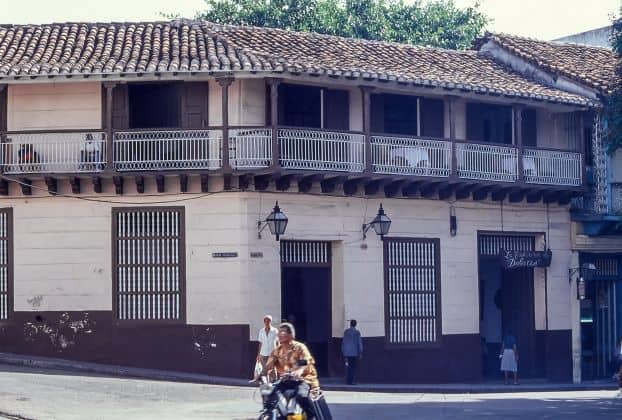
21. Museo Del Ron
Located inside a former rum distillery, Museo del Ron showcases the history and process of making rum in Santiago de Cuba. Santiago is particularly famous for its rum, even internationally.
Visitors can learn about the various rum-making techniques used throughout history, sample a variety of Cuban rums, and enjoy the lush grounds of a true rum distillery.
Museo del Ron is an absolute must-see in Santiago de Cuba and should not be missed!
Also read: 19+ Best Things To Do In Varadero Cuba From A Frequent Visitor!
22. Museo Del Carnaval
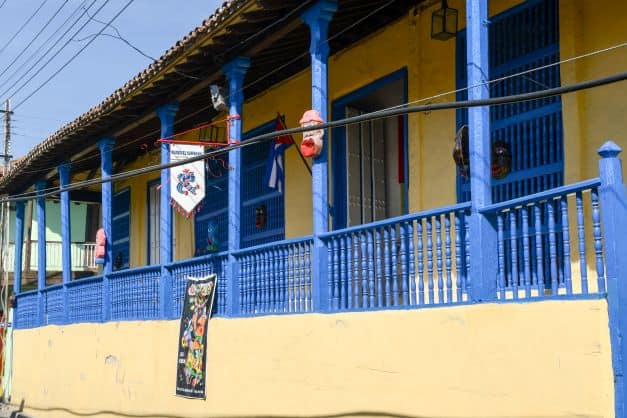
At the carnival museum, you can explore colorful costumes from past carnivals, learn about traditional music and dance styles, and get a behind-the-scenes look at the preparations for each year’s festival.
You can even try your handy skills at a few of the traditional activities!
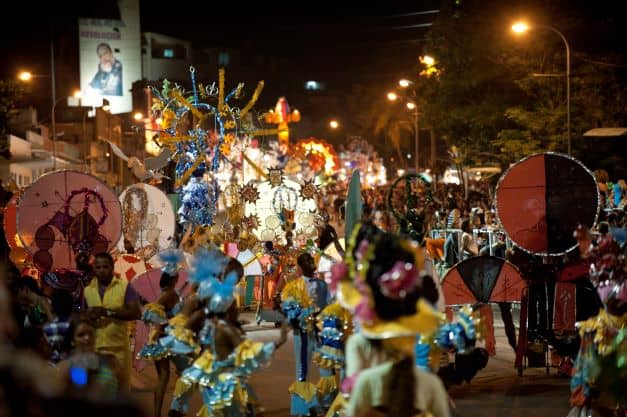
This museum is dedicated to the history and culture of the Cuban carnival, one of the most celebrated festivals in the country, and it is especially vibrant here in Santiago de Cuba.
Santiago is not called the Cuban capital of the carnival for nothing.
23. Casa De La Trova
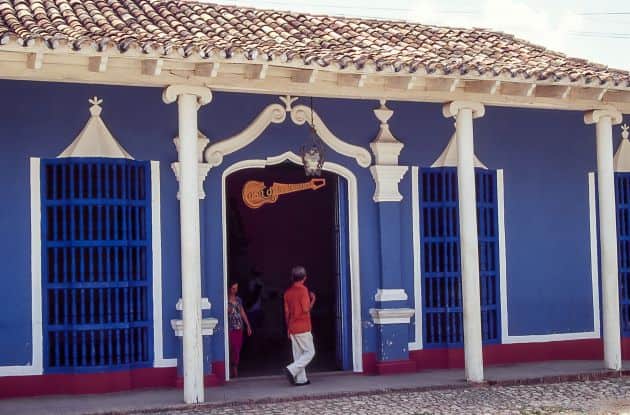
Casa de la Trova is a must-see destination for traveling music lovers, as it is perhaps the island’s most famous live music venue!
Players of the trova were known as trovadores, who traveled around Cubas Oriente province, Santiago de Cuba in particular, and earned their living by singing and playing the guitar!
Casa de la Trova is located in the heart of Santiago’s historical district and hosts concerts in the evenings. International and local musicians perform a mix of salsa, son, and bolero music.

24. Museo De La Imagen
The Museum of Image was inaugurated in 1997 and houses an impressive collection of photographs, documents, and other relics that tell the story of Santiago’s rich history.
It is situated in the former house of its founder, Bernabé Muñiz Guiberneau, one of the most famous cameramen in Cuba who was also a resident of Santiago.
The museum provides a unique window into the past with an impressive movie theater and interactive displays that illustrate the city’s cultural heritage.
Visitors can explore the collection of artifacts, take part in educational activities and workshops, or simply enjoy the atmosphere of this beautiful building.
25. Mausoleum Of The Third Eastern Front
A must-see for visitors is the Mausoleum of the Third Eastern Front, which honors those who fought in the Sierra Maestra campaign during the Cuban Revolution of 1959.
The mausoleum is nestled on a steep mountainside and features more than 40 monuments and sculptures, making it one of the most impressive sites in Cuba.
You might be moved by the poignant representations of Cuban history here, regardless of politics, as you take in this awe-inspiring memorial.
Is Santiago De Cuba Worth Visiting?

With its rich history, vibrant culture (very influenced by other Caribbean islands), and stunning architecture, YES, Santiago de Cuba is worth visiting.
I took a return trip to Santiago with the Viazul bus, which is a really long journey. You can also fly directly on an international flight or book a domestic flight from Havana.
The city is home to a range of important monuments, museums, and architectural wonders. Stroll along the streets and explore the majestic colonial buildings – many of them now protected UNESCO World Heritage sites.
FAQ’s Santiago De Cuba

When planning a trip to Santiago de Cuba, there are a few questions that tend to come up again and again among first-time travelers.
Here is the answer to some of the most common questions asked about Santiago de Cuba.
What Is Special About Santiago De Cuba?
Santiago de Cuba used to be the capital of Cuba for a short while back in the 16th Century, right after the foundation of the city.
In more modern times, Santiago de Cuba, or Sierra Maestra, was the headquarters of the rebels fighting against Batista through the 1950ies.
Also, it is the birthplace of the 26th of July movement, which is the name of the opposition group formed by Fidel Castro.
The name comes from the failed attack on the Moncada Barracks, a military facility in Santiago de Cuba, on 26 July 1953.
The young Fidel Castro led this attack, and he (and several others) were sent to prison after this incident.
What Are The Bests Bars In Santiago De Cuba?
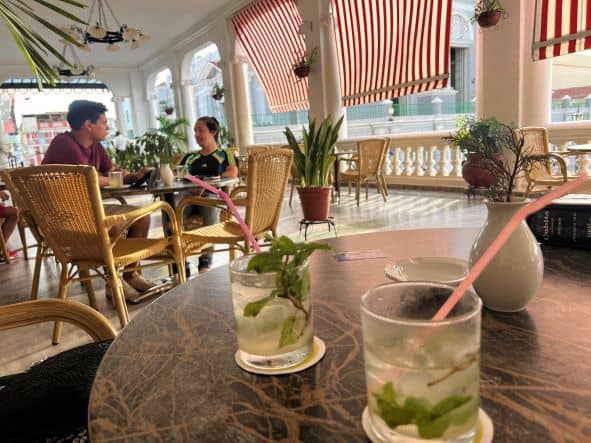
- Patio de Los Abuelos
- Casa de las Tradiciones
- Hotel Casa Grande Terrace Bar
- Iris jazz club
- Patio de Artec
- Tropicana Santiago
Does Santiago De Cuba Have Beaches?
Yes, there are beaches close to Santiago de Cuba. There are no beaches directly in the city, but a well-known and popular beach named Playa Siboney, or Siboney Beach.
Siboney Beach is about half an hour outside of Santiago de Cuba. In this area, there are also casa particulares for rent and a few restaurants.
In addition, there are smaller beaches along the coastline east and west of the entrance to Santiago de Cuba Bay. So don’t worry, you will find a beach!
What Is Special About Santiago De Cuba Rum?
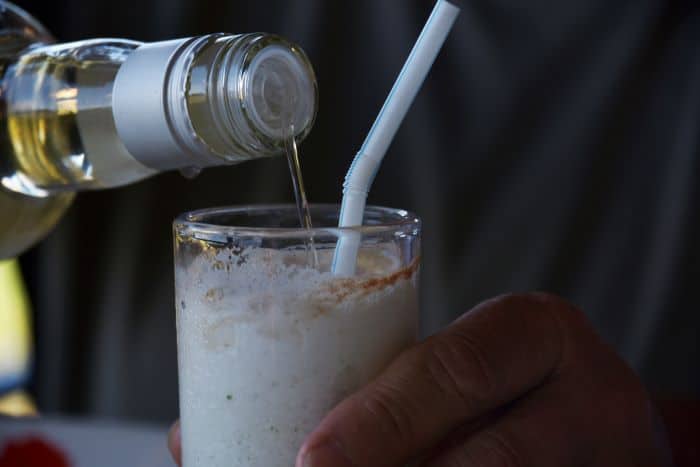
Santiago de Cuba is famous for its own rum, one of which is among the most famous ones in the world – loved by rum enthusiasts.
The Ron Santiago de Cuba, Añejo 8 Years Old, is known to have a captivating and intense flavor, as it is aged in oak barrels to perfect its delicate aromas of tropical fruits.
Because of this, it is considered a great base for exquisite cocktails or just served on the rocks, according to the connoisseurs!
What Is The Santiago De Cuba Weather Like?
Santiago de Cuba offers a “hot and oppressive” climate, which ranges from hot to super hot and has high humidity (a little less humid in the winter months).
The temperature almost always ranges from 69°F to 89°F (20-31 Celsius) throughout the year and rarely drops below 65°F or above 91°F (19 and 33 Celcius).
The temperatures are ideal for outdoor activities in late November through early May when the heat is not excruciating.
Although the weather is never really “cold”, Cubans rarely go to the beach until around April as they consider the winter way too cold!
How To Get To Santiago De Cuba?

You can fly directly to Antonio Maceo Airport in Santiago de Cuba airport. From Havana to Santiago de Cuba, it is also possible to take a domestic flight or the Viazul bus.
I have never taken a domestic flight in Cuba, which is clearly faster, but I have made the Viazul journey between Havana and Santiago. It truly is a long-haul trip, but it went surprisingly well!
The bus is comfortable enough, and the journey takes between 15 and 20 hours (day or night journey).
Between Holguin and Santiago de Cuba, you can take the Viazul bus (book online; it will take about four hours/$9) or take a taxi collectivo (faster, a bit pricier).
If you want to book a taxi collective, you can get help to do that through your hotel or your casa particular host.
Wrap-Up Things To Do In Santiago de Cuba!
Even though Santiago de Cuba, in any respect, is a small city with around 500 thousand citizens, there is a lot of history here – and a lot of things to do.
I really enjoyed my trip here, despite the 20 hours of bus journey all the way from Havana!
Both in the city itself and in the immediate surroundings, you will find historical details, famous sights, and stunning adventures.
And if you don’t mind a few hours of transport, there will also be wonderful experiences, especially in Sierra Maestra. Santiago de Cuba and surrounding areas are an amazing part of Cuba to visit, with so much to offer.
Related blog posts:
Sensational 7 Days In Cuba Itinerary By A Local
Solo Holidays To Cuba: Important Things To Know Before Visiting Cuba From A Local
How to get a tourist card for Cuba By An Expert (Easy Guide)

